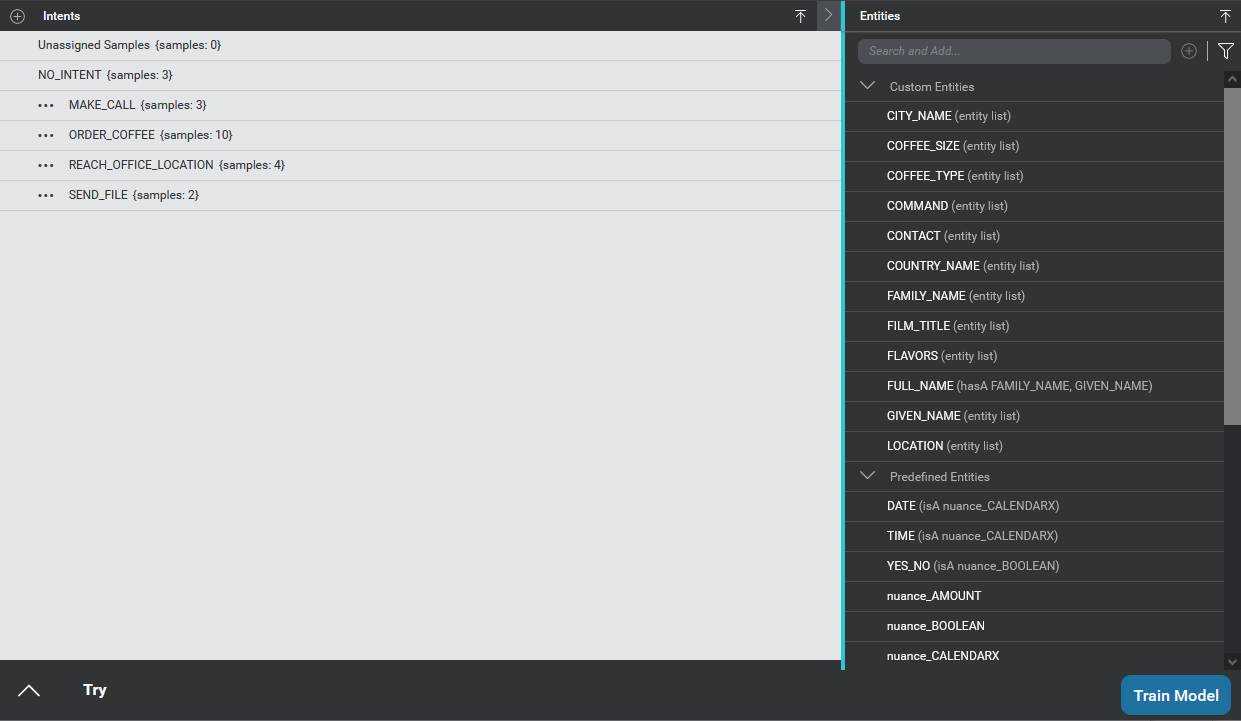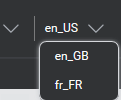Create models with the Develop tab
You use the Mix.nlu Develop tab to create intents and entities, add samples, try your model, and then train it.

The Develop tab is comprised of four main areas :
- On the left is the Intents area. You add intents from the Intents bar. The intents bar also allows you to import files to add samples and add to the definitions of intents and entities, similar to import functionality in the Mix dashboard. When you first open the window, the Intents area lists the intents that are available in your project. Select an intent to see the samples and entities that it includes.
- On the right is the Entities area. The Entities area allows you to add and edit entities, as well as import data for some entities. When you first open Develop, the Entities area lists the Entities that are available in your project. Select an entity to see its details.
- On the bottom-left is the Try area, where you can try out your model against sample utterances.
- On the bottom right is the Train Model button, which lets you train your model so that you can use it.
Note:
Depending on the project, you may also see prebuilt domains listed in the Intents and Entities areas. Samples and entity literals for prebuilt domains are included but hidden from view because the data is proprietary.Multiple language support
Mix.nlu supports multiple languages (or locales) per project. As you can imagine, sample phrases of what your users may say will differ from one language to another. Your samples, therefore, will be different per language/locale.
To filter the list of samples, select the language code from the menu near the name of your project. (If your project includes a single language, no menu appears.)
For example, this project supports three locales, with en_US currently selected:

Mix.nlu also allows you to define different literals for list-type entity values per language/locale. This allows you to support the various languages in which your users might ask for an item, such as “coffee”, “café”, or “kaffee” for a “drip” coffee. More information on how to do this is provided in the sections that follow.
Develop your model
To develop your model, you:
- Add intents to your model. An intent defines and identifies an intended action. An utterance or query spoken by a user will express an intent, for example, to order a drink. As you develop an NLU model, you define intents based on what you expect your users to do in your application.
- Add entities to your model. Entities identify details or categories of information relevant to your application. While the intent is the overall meaning of a sentence, entities and values capture the meaning of individual words and phrases in that sentence.
- Link your entities to your intents. Intents are almost always associated with entities that serve to further specify particulars about the intended action.
- Add samples. Samples are typical sentences that your users might say. They teach Mix how your users will interact with your application.
- Annotate your samples. Once you define entities in an ontology, you need to annotate the tokens within the samples so that the machine learns.
- Modify intents and annotations. Make any required modifications to your intents and annotations.
- Verify samples before training. As a final step, review the verification status of each sample phrase or sentence. This is an essential step that has a direct impact on the accuracy of the data used to create your model(s).
Related topics
Feedback
Was this page helpful?
Glad to hear it! Please tell us how we can improve.
Sorry to hear that. Please tell us how we can improve.